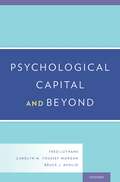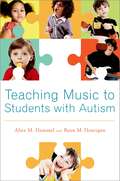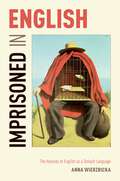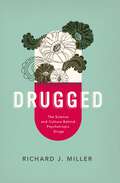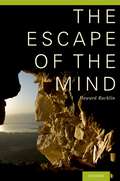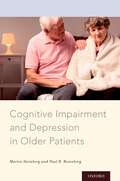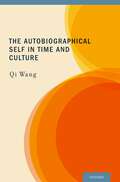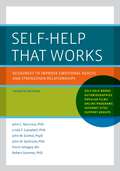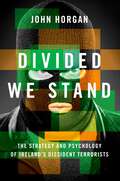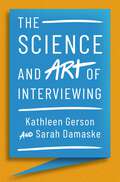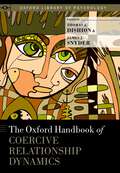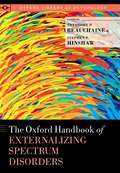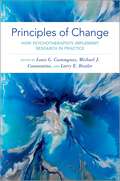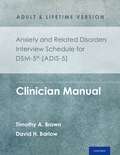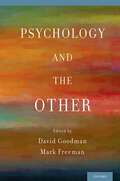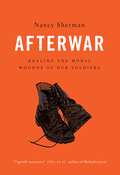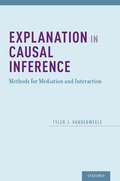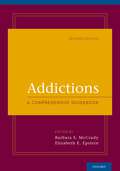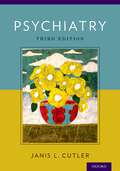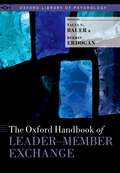- Table View
- List View
Psychological Capital and Beyond
by Fred Luthans Bruce J. Avolio Carolyn M. Youssef-MorganAlthough there are as many answers to the question of how organizations can gain competitive advantage in today's global economy as there are books and experts, one lesson seems very clear: traditional answers and resources are no longer sufficient. This seminal book offers not only an answer regarding how to gain competitive advantage through people, but also a brand new, untapped human resource--psychological capital, or simply PsyCap. Generated from both the positive-psychology movement and the authors' pioneering work on positive organizational behavior, PsyCap is a rigorous concept: to be included in PsyCap, a given positive construct must be based on theory, research, and valid measurement, must be open to development, and must have measurable performance impact. The positive constructs that have been determined to best meet these PsyCap criteria--efficacy (confidence), hope, optimism, and resiliency--are covered in separate chapters in Psychological Capital and Beyond. Following an exploration of other potential positive constructs such as creativity, wisdom, well-being, flow, humor, gratitude, forgiveness, emotional intelligence, spirituality, authenticity, and courage, the authors summarize the research demonstrating the performance impact of PsyCap. They go on to provide the PsyCap Questionnaire (PCQ) as a measurement tool, and the PsyCap Intervention (PCI) as a development aid. Psychological Capital and Beyond provides theory, research, measurements, and methods of application for psychological capital, a resource that can be developed and sustained for competitive advantage. Each copy includes a complimentary PsyCap online self-assessment.
Teaching Music to Students with Autism
by Alice M. Hammel Ryan M. HouriganTeaching Music to Students with Autism is a comprehensive resource for everyone who works with students with autism within the music classroom. The authors focus on understanding autism, advocating for students and music programs, and creating and maintaining a team approach by working together with colleagues effectively. A significant portion of the book is focused on understanding and overcoming the communication, cognition, behavior, sensory, and socialization challenges inherent in working with students with autism. The authors suggest ways to structure classroom experiences and learning opportunities for all students. The book includes vignettes and classroom snapshots from experienced music teachers which provide additional opportunities to transfer theory to real-life application.
Imprisoned in English: The Hazards of English as a Default Language
by Anna WierzbickaIn Imprisoned in English, Anna Wierzbicka argues that in the present English-dominated world, millions of people - including academics, lawyers, diplomats, and writers - can become "prisoners of English", unable to think outside English. In particular, social sciences and the humanities are now increasingly locked in a conceptual framework grounded in English. To most scholars in these fields, treating English as a default language seems a natural thing to do. The book's approach is interdisciplinary, and its themes range over areas of central interest to anthropology, psychology, and sociology, among others. The linguistic material is drawn from languages of America, Australia, the Pacific, South-East Asia and Europe. Wierzbicka argues that it is time for human sciences to take advantage of English as a global lingua franca while at the same time transcending the limitations of the historically-shaped conceptual vocabulary of English. And she shows how this can be done.
Drugged: The Science and Culture Behind Psychotropic Drugs
by Richard J. Miller"Morphine," writes Richard J. Miller, "is the most significant chemical substance mankind has ever encountered." So ancient that remains of poppies have been found in Neolithic tombs, it is the most effective drug ever discovered for treating pain. "Whatever advances are made in medicine," Miller adds, "nothing could really be more important than that." And yet, when it comes to mind-altering substances, morphine is only a cc or two in a vast river that flows through human civilization, ranging LSD to a morning cup of tea. In DRUGGED, Miller takes readers on an eye-opening tour of psychotropic drugs, describing the various kinds, how they were discovered and developed, and how they have played multiple roles in virtually every culture. The vast scope of chemicals that cross the blood-brain barrier boggle the very brain they reach: cannabis and cocaine, antipsychotics and antidepressants, alcohol, amphetamines, and Ecstasy-and much more. Literate and wide-ranging, Miller weaves together science and history, telling the story of the undercover theft of 20,000 tea plants from China by a British spy, for example, the European discovery of coffee and chocolate, and how James Wolfgang von Goethe, the famous man of letters, first isolated the alkaloid we now know as caffeine. Miller explains what scientists know-and don't-about the impact of each drug on the brain, down to the details of neurotransmitters and their receptors. He clarifies the differences between morphine and heroin, mescaline and LSD, and other similar substances. Drugged brims with surprises, revealing the fact that antidepressant drugs evolved from the rocket fuel that shot V2 rockets into London during World War II, highlighting the role of hallucinogens in the history of religion, and asking whether Prozac can help depressed cats. Entertaining and authoritative, Drugged is a truly fascinating book.
The Escape of the Mind
by Howard RachlinThe Escape of the Mind is part of a current movement in psychology and philosophy of mind that calls into question what is perhaps our most basic, most cherished, and universally accepted belief--that our minds are inside of our bodies. Howard Rachlin adopts the counterintuitive position that our minds, conscious and unconscious, lie not where our firmest (yet unsupported) introspections tell us they are, but in how we actually behave over the long run. Perhaps paradoxically, the book argues that our introspections, no matter how positive we are about them, tell us absolutely nothing about our minds. The name of the present version of this approach to the mind is "teleological behaviorism." The approaches of teleological behaviorism will be useful in the science of individual behavior for developing methods of self-control and in the science of social behavior for developing social cooperation. Without in any way denigrating the many contributions of neuroscience to human welfare, The Escape of the Mind argues that neuroscience, like introspection, is not a royal road to the understanding of the mind. Where then should we look to explain a present act that is clearly caused by the mind? Teleological behaviorism says to look not in the spatial recesses of the nervous system (not to the mechanism underlying the act) but in the temporal recesses of past and future overt behavior (to the pattern of which the act is a part). But scientific usefulness is not the only reason for adopting teleological behaviorism. The final two chapters on IBM's computer, Watson (how it deviates from humanity and how it would have to be altered to make it human), and on shaping a coherent self, provide a framework for a secular morality based on teleological behaviorism.
The Escape of the Mind
by Howard RachlinThe Escape of the Mind is part of a current movement in psychology and philosophy of mind that calls into question what is perhaps our most basic, most cherished, and universally accepted belief--that our minds are inside of our bodies. Howard Rachlin adopts the counterintuitive position that our minds, conscious and unconscious, lie not where our firmest (yet unsupported) introspections tell us they are, but in how we actually behave over the long run. Perhaps paradoxically, the book argues that our introspections, no matter how positive we are about them, tell us absolutely nothing about our minds. The name of the present version of this approach to the mind is "teleological behaviorism." The approaches of teleological behaviorism will be useful in the science of individual behavior for developing methods of self-control and in the science of social behavior for developing social cooperation. Without in any way denigrating the many contributions of neuroscience to human welfare, The Escape of the Mind argues that neuroscience, like introspection, is not a royal road to the understanding of the mind. Where then should we look to explain a present act that is clearly caused by the mind? Teleological behaviorism says to look not in the spatial recesses of the nervous system (not to the mechanism underlying the act) but in the temporal recesses of past and future overt behavior (to the pattern of which the act is a part). But scientific usefulness is not the only reason for adopting teleological behaviorism. The final two chapters on IBM's computer, Watson (how it deviates from humanity and how it would have to be altered to make it human), and on shaping a coherent self, provide a framework for a secular morality based on teleological behaviorism.
Cognitive Impairment and Depression in Older Patients
by Martin Steinberg Paul B. RosenbergCognitive impairment and depression in older people have challenged clinicians and families for decades. These conditions affect well over half of people after age 65 with an incidence that increases with advancing age. Many factors account for this including the aging brain, loss of purpose, social isolation, personal losses, medical morbidity, and others. The mortality, disability, and burdens associated with these conditions, affecting patients, family members, and society at large are legion. Advances in epidemiology, brain science, therapeutics, and in service delivery continue to improve our understanding of these conditions, their causes, and the best ways to treat them. Despite this cognitive impairment and depression in later life remain underdiagnosed and undertreated in the United States. This book provides a single source for clinicians who treat older people to become more effective in the evaluation, diagnosis, and treatment of these challenging late life conditions. It offers a pragmatic, easy-to-use, resource that guides clinicians in how to best evaluate and treat older people with depression and cognitive impairment.
The Autobiographical Self in Time and Culture
by Qi WangIn this volume, Qi Wang traces the developmental, social, cultural, and historical origins of the autobiographical self - the self that is made of memories of the personal past and of the family and the community. Wang combines rigorous research, sensitive survey of real memories and memory conversations, and fascinating personal anecdotes into a state-of-the-art book. As a "marginal woman" who grew up in the East and works and lives in the West, Wang's analysis is unique, insightful, and approachable. Her accounts of her own family stories, extraordinarily careful and thorough documentation of research findings, and compelling theoretical insights together convey an unequivocal message: The autobiographical self is conditioned by one's time and culture. Beginning with a perceptive examination of the form, content, and function of parent-child conversations of personal and family stories, Wang undertakes to show how the autobiographical self is formed in and shaped by the process of family storytelling situated in specific cultural contexts. By contrasting the development of autobiographical writings in Western and Chinese literatures, Wang seeks to demonstrate the cultural stance of the autobiographical self in historical time. She examines the autobiographical self in personal time, thoughtfully analyzing the form, structure, and content of everyday memories to reveal the role of culture in modulating information processing and determining how the autobiographical self is remembered. Focusing on memories of early childhood, Wang seeks to answer the question of when the autobiographical self begins from a cross-cultural perspective. She sets out further to explore some of the most controversial issues in current psychological research of autobiographical memory, focusing particularly on issues of memory representations versus memory narratives and silence versus voice in the construction of the autobiographical self appropriate to one's cultural assumptions. She concludes with historical analyses of the influences of the larger social, political, and economic forces on the autobiographical self, and takes a forward look at the autobiographical self as a product of modern technology.
Self-Help That Works: Resources to Improve Emotional Health and Strengthen Relationships
by John C. Norcross John W. Santrock Robert Sommer Linda F. Campbell John M. Grohol Florin SelageaSelf-help is big business, but alas, not always a scientific one. Self-help books, websites, and movies abound and are important sources of psychological advice for millions of Americans. But how can you sift through them to find the ones that work? Self-Help That Works is an indispensable guide that enables readers to identify effective self-help materials and distinguish them from those that are potentially misleading or even harmful. Six scientist-practitioners bring careful research, expertise, and a dozen national studies to the task of choosing and recommending self-help resources. Designed for both laypersons and mental-health professionals, this book critically reviews multiple types of self-help resources, from books and autobiographies to films, online programs, support groups, and websites, for 41 different behavioral disorders and life challenges. The revised edition of this award-winning book now features online self-help resources, expanded content, and new chapters focusing on autism, bullying, chronic pain, GLB issues, happiness, and nonchemical addictions. Each chapter updates the self-help resources launched since the previous edition and expands the material. The final chapters provide key strategies for consumers evaluating self-help as well as for professionals integrating self-help into treatment. All told, this updated edition of Self-Help that Works evaluates more than 2,000 self-help resources and brings together the collective wisdom of nearly 5,000 mental health professionals. Whether seeking self-help for yourself, loved ones, or patients, this is the go-to, research-based guide with the best advice on what works.
Divided We Stand: The Strategy and Psychology of Ireland's Dissident Terrorists
by John HorganTerrorism has returned to the streets of Northern Ireland. In the years after the 1998 Real IRA bombing of Omagh, which killed 29 people, violent dissident Republican groups have re-emerged as a major security threat to a region that has been denied peace, stability, and prosperity for too long. Those responsible have many names. They are breakaways, splinter factions, spoilers, and "residual" terrorists. The Real IRA, Continuity IRA, and Óglaigh na hÉireann are only some of the groups now responsible for a growing wave of bombings, shootings, threats, and intimidation across Northern Ireland. Commonly known as "the dissidents," these are the rejectionists for whom there seems to be no negotiated settlement, no peace deal, no consensus solution that will convince them to accept the will of the majority of the people on the island of Ireland. Divided We Stand: The Strategy and Psychology of Ireland's Dissident Terrorists presents the results of meticulous research conducted by the International Center for the Study of Terrorism at the Pennsylvania State University. Since 2007, John Horgan, Director of the center, has led a research project to monitor the activities of Ireland's new terrorists. Drawing on one of the largest open-source militant databases ever assembled, Divided We Stand describes the activities, histories, motivations, psychology, and strategy of the small, dynamic, and rapidly evolving splinter groups that continue to erode peace, stability, and normalization in Northern Ireland.
The Science and Art of Interviewing
by Kathleen Gerson Sarah DamaskeQualitative interviewing is among the most widely used methods in the social sciences, but it is arguably the least understood. In The Science and Art of Interviewing, Kathleen Gerson and Sarah Damaske offer clear, theoretically informed and empirically rich strategies for conducting interview studies. They present both a rationale and guide to the science-and art-of in-depth interviewing to take readers through all the steps in the research process, from the initial stage of formulating a question to the final one of presenting the results. Gerson and Damaske show readers how to develop a research design for interviewing, decide on and find an appropriate sample, construct a questionnaire, conduct probing interviews, and analyze the data they collect. At each stage, they also provide practical tips about how to address the ever-present, but rarely discussed challenges that qualitative researchers routinely encounter, particularly emphasizing the relationship between conducting well-crafted research and building powerful social theories. With an engaging, accessible style, The Science and Art of Interviewing targets a wide range of audiences, from upper-level undergraduates and graduate methods courses to students embarking on their dissertations to seasoned researchers at all stages of their careers.
SCIENCE & ART OF INTERVIEWING C
by Kathleen Gerson Sarah DamaskeQualitative interviewing is among the most widely used methods in the social sciences, but it is arguably the least understood. In The Science and Art of Interviewing, Kathleen Gerson and Sarah Damaske offer clear, theoretically informed and empirically rich strategies for conducting interview studies. They present both a rationale and guide to the science-and art-of in-depth interviewing to take readers through all the steps in the research process, from the initial stage of formulating a question to the final one of presenting the results. Gerson and Damaske show readers how to develop a research design for interviewing, decide on and find an appropriate sample, construct a questionnaire, conduct probing interviews, and analyze the data they collect. At each stage, they also provide practical tips about how to address the ever-present, but rarely discussed challenges that qualitative researchers routinely encounter, particularly emphasizing the relationship between conducting well-crafted research and building powerful social theories. With an engaging, accessible style, The Science and Art of Interviewing targets a wide range of audiences, from upper-level undergraduates and graduate methods courses to students embarking on their dissertations to seasoned researchers at all stages of their careers.
The Oxford Handbook of Coercive Relationship Dynamics (Oxford Library of Psychology)
Coercive interactions and conflict are commonplace in close relationships and families, friendships, and teacher-student relationships in schools. Coercion and conflict can be used to grow stronger relationships, or they can lead to the deterioration of relationships, undermine efforts to socialize and teach youth, and lead to the development of mental health problems in children and parents. Coercion theory helps shed light on how these daily interaction dynamics explain the development of aggression, marital conflict, depression, and severe mental health problems in families and how they undermine school safety and effectiveness. The Oxford Handbook of Coercive Relationship Dynamics features the most recent, innovative applications of coercion theory to understanding psychopathology, developmental theory, and intervention science. The volume provides a multidisciplinary perspective on coercive processes, origins, and social functions to anchor coercion theory from multiple perspectives and to lay a theoretical and empirical foundation for innovative expansion of the coercion model to new areas of research. The volume gives specific examples of how the basic coercive processes underlie the development of significant suffering in children and families, and chapters include clinically oriented discussions of research on the role of coercion in the causation and amplification of problem behavior and emotional distress. The internationally renowned authors of this volume highlight scientific advances in the study of coercive dynamics in families and close relationships, account for physiological and genetic correlates of coercive dynamics, and discuss the application of coercion theory to effective interventions that improve the quality and well-being of children, adolescents, and adults. This volume is an invaluable resource on behavioral science methodology, developmental theory, and intervention science.
The Oxford Handbook of Externalizing Spectrum Disorders (Oxford Library of Psychology)
Recent developments in the conceptualization of externalizing spectrum disorders, including attention-deficit/hyperactivity disorder, conduct disorder, antisocial personality disorder, and substance use disorders, suggest common genetic and neural substrates. Despite this, neither shared vulnerabilities nor their implications for developmental models of externalizing conduct are captured by prevailing nosologic and diagnostic systems, such as the DSM-5. The Oxford Handbook of Externalizing Spectrum Disorders is the first book of its kind to capture the developmental psychopathology of externalizing spectrum disorders by examining causal factors across levels of analysis and developmental epochs, while departing from the categorical perspective. World renowned experts on externalizing psychopathology demonstrate how shared genetic and neural vulnerabilities predispose to trait impulsivity, a highly heritable personality construct that is often shaped by adverse environments into increasingly intractable forms of externalizing conduct across development. Consistent with contemporary models of almost all forms of psychopathology, the Handbook emphasizes the importance of neurobiological vulnerability and environmental risk interactions in the expression of externalizing behavior across the lifespan. The volume concludes with an integrative, ontogenic process model of externalizing psychopathology in which diverse equifinal and multifinal pathways to disorder are specified.
Principles of Change: How Psychotherapists Implement Research in Practice
Principles of Change constitutes a new approach to evidence-based practice in psychotherapy that goes beyond the traditional and unidirectional dissemination of research, whereby clinicians are typically viewed as passive recipients of scientific findings. Based on an extensive review of literature, it first offers a list of 38 empirically based principles of change grouped in five categories: client prognostic, treatment/provider moderating, client process, therapeutic relationship, and therapist interventions. Six therapists from diverse theoretical orientations then describe, in rich and insightful detail, how they implement each of these principles. The book also offers exchanges between researchers and clinicians on several key issues, including: how similarly and differently change principles are addressed or used across a variety of treatments; and how clinicians' observations and reflections can guide future research. By presenting together these unique yet complementary experiences, Principles of Change will support synergetic advances in understanding and improving psychotherapy, laying the foundation for further collaborations and partnerships between stakeholders in mental health services.
Anxiety and Related Disorders Interview Schedule for DSM-5®: Clinician Manual (Treatments That Work)
by Timothy A. Brown David H. BarlowThe Anxiety and Related Disorders Interview Schedule for DSM-5® (ADIS-5) Clinician Manual accompanies both the Adult and Lifetime versions of the ADIS-5 Client Interview Schedules. The interview schedules are designed to diagnose anxiety, mood, obsessive-compulsive, trauma, and related disorders (e.g., somatic symptom, substance use) and to permit differential diagnosis among these disorders according to DSM-5® criteria (American Psychiatric Association, 2013). The Clinician Manual provides information for the clinician about uses of the ADIS-5, changes introduced in the ADIS-5, coverage of the ADIS-5, organization of diagnostic sections, how to administer the ADIS-5, and more.
Psychology and the Other
The figure of the Other is an important though underutilized vehicle for exploring and reconceptualizing classic psychological and philosophical issues, from identity and purpose to human frailty and suffering. Moreover, it can be used to reorient inquiry toward aspects of the human condition that are often regarded as secondary or peripheral--for instance, our responsibility to others and to the environment. A broad spectrum of disciplines including psychology, philosophy, theology, and religious studies speak about the challenges we face in encountering the Other vis-à-vis our receptivity, openness, and capacity to entertain the stranger in our midst. Through constructive critical exchange, Psychology and the Other engages such perspectives on the Other from various subdisciplines within psychology and related disciplines. The volume uses the language of the Other as a vehicle for rethinking aspects of psychological processes, especially within the therapeutic context. As a group, the contributors demonstrate that the language of the Other may be more fitting than the egocentric language frequently employed in psychology. They also embrace the challenge to create new theories and practices that are more ethically attuned to the dynamic realities of psychological functioning. The book is organized into three sections. The first deals with foundational philosophical concerns and provides an introduction to the project of "thinking Otherwise." The second section brings these fundamental philosophical concerns to bear on the therapeutic situation, especially in the realm of relational psychoanalysis. The final section of the book addresses concrete psychological situations in which the Other figures prominently and where the power of thinking Otherwise is most visibly demonstrated.
PSYCHOLOGY & THE OTHER C
by David Goodman and Mark FreemanThe figure of the Other is an important though underutilized vehicle for exploring and reconceptualizing classic psychological and philosophical issues, from identity and purpose to human frailty and suffering. Moreover, it can be used to reorient inquiry toward aspects of the human condition that are often regarded as secondary or peripheral--for instance, our responsibility to others and to the environment. A broad spectrum of disciplines including psychology, philosophy, theology, and religious studies speak about the challenges we face in encountering the Other vis-à-vis our receptivity, openness, and capacity to entertain the stranger in our midst. Through constructive critical exchange, Psychology and the Other engages such perspectives on the Other from various subdisciplines within psychology and related disciplines. The volume uses the language of the Other as a vehicle for rethinking aspects of psychological processes, especially within the therapeutic context. As a group, the contributors demonstrate that the language of the Other may be more fitting than the egocentric language frequently employed in psychology. They also embrace the challenge to create new theories and practices that are more ethically attuned to the dynamic realities of psychological functioning. The book is organized into three sections. The first deals with foundational philosophical concerns and provides an introduction to the project of "thinking Otherwise." The second section brings these fundamental philosophical concerns to bear on the therapeutic situation, especially in the realm of relational psychoanalysis. The final section of the book addresses concrete psychological situations in which the Other figures prominently and where the power of thinking Otherwise is most visibly demonstrated.
Afterwar: Healing the Moral Wounds of Our Soldiers
by Nancy ShermanMovies like American Sniper and The Hurt Locker hint at the inner scars our soldiers incur during service in a war zone. The moral dimensions of their psychological injuries--guilt, shame, feeling responsible for doing wrong or being wronged-elude conventional treatment. Georgetown philosophy professor Nancy Sherman turns her focus to these moral injuries in Afterwar. She argues that psychology and medicine alone are inadequate to help with many of the most painful questions veterans are bringing home from war. Trained in both ancient ethics and psychoanalysis, and with twenty years of experience working with the military, Sherman draws on in-depth interviews with servicemen and women to paint a richly textured and compassionate picture of the moral and psychological aftermath of America's longest wars. She explores how veterans can go about reawakening their feelings without becoming re-traumatized; how they can replace resentment with trust; and the changes that need to be made in order for this to happen-by military courts, VA hospitals, and the civilians who have been shielded from the heaviest burdens of war. 2.6 million soldiers are currently returning home from war, the greatest number since Vietnam. Facing an increase in suicides and post-traumatic stress, the military has embraced measures such as resilience training and positive psychology to heal mind as well as body. Sherman argues that some psychological wounds of war need a kind of healing through moral understanding that is the special province of philosophical engagement and listening.
Afterwar: Healing the Moral Wounds of Our Soldiers
by Nancy ShermanMovies like American Sniper and The Hurt Locker hint at the inner scars our soldiers incur during service in a war zone. The moral dimensions of their psychological injuries--guilt, shame, feeling responsible for doing wrong or being wronged-elude conventional treatment. Georgetown philosophy professor Nancy Sherman turns her focus to these moral injuries in Afterwar. She argues that psychology and medicine alone are inadequate to help with many of the most painful questions veterans are bringing home from war. Trained in both ancient ethics and psychoanalysis, and with twenty years of experience working with the military, Sherman draws on in-depth interviews with servicemen and women to paint a richly textured and compassionate picture of the moral and psychological aftermath of America's longest wars. She explores how veterans can go about reawakening their feelings without becoming re-traumatized; how they can replace resentment with trust; and the changes that need to be made in order for this to happen-by military courts, VA hospitals, and the civilians who have been shielded from the heaviest burdens of war. 2.6 million soldiers are currently returning home from war, the greatest number since Vietnam. Facing an increase in suicides and post-traumatic stress, the military has embraced measures such as resilience training and positive psychology to heal mind as well as body. Sherman argues that some psychological wounds of war need a kind of healing through moral understanding that is the special province of philosophical engagement and listening.
Explanation in Causal Inference: Methods for Mediation and Interaction
by Tyler VanderWeeleThe book provides an accessible but comprehensive overview of methods for mediation and interaction. There has been considerable and rapid methodological development on mediation and moderation/interaction analysis within the causal-inference literature over the last ten years. Much of this material appears in a variety of specialized journals, and some of the papers are quite technical. There has also been considerable interest in these developments from empirical researchers in the social and biomedical sciences. However, much of the material is not currently in a format that is accessible to them. The book closes these gaps by providing an accessible, comprehensive, book-length coverage of mediation. The book begins with a comprehensive introduction to mediation analysis, including chapters on concepts for mediation, regression-based methods, sensitivity analysis, time-to-event outcomes, methods for multiple mediators, methods for time-varying mediation and longitudinal data, and relations between mediation and other concepts involving intermediates such as surrogates, principal stratification, instrumental variables, and Mendelian randomization. The second part of the book concerns interaction or "moderation," including concepts for interaction, statistical interaction, confounding and interaction, mechanistic interaction, bias analysis for interaction, interaction in genetic studies, and power and sample-size calculation for interaction. The final part of the book provides comprehensive discussion about the relationships between mediation and interaction and unites these concepts within a single framework. This final part also provides an introduction to spillover effects or social interaction, concluding with a discussion of social-network analyses. The book is written to be accessible to anyone with a basic knowledge of statistics. Comprehensive appendices provide more technical details for the interested reader. Applied empirical examples from a variety of fields are given throughout. Software implementation in SAS, Stata, SPSS, and R is provided. The book should be accessible to students and researchers who have completed a first-year graduate sequence in quantitative methods in one of the social- or biomedical-sciences disciplines. The book will only presuppose familiarity with linear and logistic regression, and could potentially be used as an advanced undergraduate book as well.
Addictions: A Comprehensive Guidebook
by Barbara S. McCrady Elizabeth E. EpsteinIn the 14 years since the first edition of Addictions was published, a wealth of substantive and crucial new findings have been added to our knowledge of alcohol and other substance use disorders. This primary reference has now been updated and expanded to include 38 chapters, all completely rewritten to reflect new knowledge gained about the science of alcohol and other drugs, as well as new treatment approaches and research trends. Addictions: A Comprehensive Guidebook, Second Edition, features a roster of senior scientists covering the latest findings in the study of alcohol and other drug use, abuse, and dependence. Skillfully edited by Drs. Barbara S. McCrady and Elizabeth E. Epstein, the chapters primarily review the literature published in the last 14 years since the first edition. The volume covers seven different content areas: Section I addresses broad conceptual issues as well as information on the etiology, neuroscience, epidemiology and course of alcohol and other drug use, abuse, and dependence. Section II provides detailed pharmacological and clinical information on the major drugs of abuse, including alcohol. Sections III, IV, and V focus on knowledge of importance to clinical practice, including a section on assessment and treatment planning, information on a range of empirically supported treatments, and issues related to clinical practice. Section VI provides information about specific population groups, and Section VII addresses policy, prevention, and economic issues in the field. The book is appropriate for a wide variety of readers who are either treating, learning to treat, doing research on, or teaching about addictions. Comprehensive and succinct, it is written in a manner that is accessible and useful to practitioners, students, clinician trainees, and researchers. It is also an ideal textbook for graduate courses and training programs in psychology, psychiatry, social work, and addictions certifications, and for advanced undergraduate courses on alcohol and other substance use disorders
Psychiatry
by Janis CutlerFully updated for DSM-5 and designed specifically for medical students, as well as other trainees in the heath professions, Psychiatry 3e is a dynamic introductory textbook in psychiatry. Ideally suited for first and second year medical students during their psychopathology course and third year medical students during their psychiatry clerkship, the material is presented in a clear, concise, and practical manner perfect for exam preparation. The authors provide a thorough yet concise introduction to clinical psychiatry, focusing on basic clinical skills like recognition and assessment of psychiatric illness. Clinically relevant information is emphasized, including practical interviewing techniques. Psychiatry 3e also uses case studies, DSM-5 guidelines, and extensive tables offset from the text to act as a comprehensive yet concise guide for the busy medical student studying for exams. In response to DSM-5, the third edition has been reorganised and fully updated to include the new disorders and classification of psychiatric illness.
Psychiatry
by Janis L. CutlerFully updated for DSM-5 and designed specifically for medical students, as well as other trainees in the heath professions, Psychiatry 3e is a dynamic introductory textbook in psychiatry. Ideally suited for first and second year medical students during their psychopathology course and third year medical students during their psychiatry clerkship, the material is presented in a clear, concise, and practical manner perfect for exam preparation. The authors provide a thorough yet concise introduction to clinical psychiatry, focusing on basic clinical skills like recognition and assessment of psychiatric illness. Clinically relevant information is emphasized, including practical interviewing techniques. Psychiatry 3e also uses case studies, DSM-5 guidelines, and extensive tables offset from the text to act as a comprehensive yet concise guide for the busy medical student studying for exams. In response to DSM-5, the third edition has been reorganised and fully updated to include the new disorders and classification of psychiatric illness.
The Oxford Handbook of Leader-Member Exchange (Oxford Library of Psychology)
Leader-member exchange (LMX) is the foremost dyadic theory in the leadership literature. Whereas contemporary leadership theories such as transformational, servant, or authentic leadership theories focus on the effects of leader behaviors on employee attitudes, motivation, and team outcomes, relational leadership theory views the dyadic relationship quality between leaders and members as the key to understanding leader effects on members, teams, and organizations. This approach views trust- and respect-based relationships as the cornerstone of leadership. LMX has grown from a new theory in the 1970s to a mature area of research in 2015. Interest in this theory has increased rapidly over the past four decades, and the pace of research in this area continues to accelerate dramatically. The Oxford Handbook of Leader-Member Exchange takes stock of the literature to examine its roots, what is currently known, what research gaps may exist, and what areas are in need of the most urgent research.
